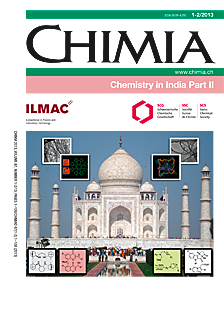Pyridyloxy Cyclophosphazenes and Carbophosphazenes: Inorganic Ring-Supported Coordination Platforms
DOI:
https://doi.org/10.2533/chimia.2013.64Keywords:
Cyclophosphazene, Carbophosphazene, Heterometallic compounds, Multi-site coordination ligands, Pyridyloxy carbophosphazene, Pyridyloxy cyclophosphazene, Pyridyloxy ligandsAbstract
This review deals with the utility of cyclophosphazenes and carbophosphazenes as supports for the construction of multi-site coordination platforms. The rich nucleophilic substitution chemistry of the chlorocyclophosphazenes and the analogous carbocyclophosphazenes can be utilized to replace chlorine atoms from these inorganic rings with coordinating side arms. This leads to the assembly of interesting compounds that have the capability to bind to multiple transition metal ions. Using this strategy several coordination ligands have been constructed. After a brief introduction to such ligands, this review deals with pyridyloxy cyclophosphazenes and carbophosphazenes. These ligands, in addition to possessing multiple coordinating arms, are also considered to be structurally flexible systems. This is because the pyridyl substituents are connected to the inorganic ring skeleton through flexible oxygen spacer atoms. The coordination chemistry of these pyridyloxy systems is discussed particularly in light of the work that has emanated from our laboratories in India.Downloads
Published
2013-02-27
Issue
Section
Scientific Articles
License
Copyright (c) 2013 Swiss Chemical Society

This work is licensed under a Creative Commons Attribution-NonCommercial 4.0 International License.
How to Cite
[1]
Chimia 2013, 67, 64, DOI: 10.2533/chimia.2013.64.







